
BE THE FIRST TO KNOW
Subscribe to the Porto eCommerce newsletter to receive timely updates from your favorite products.
Luxury Vinyl Flooring is affordable — but the full cost isn’t always obvious upfront.
Material prices, labor, prep work, and room size all play a role in the final number. And depending on the choices you make, the total luxury vinyl flooring cost can vary more than you’d think.
This guide covers everything you need to know: how pricing works, what affects it, and how to plan your budget without guesswork.
Let’s get started.
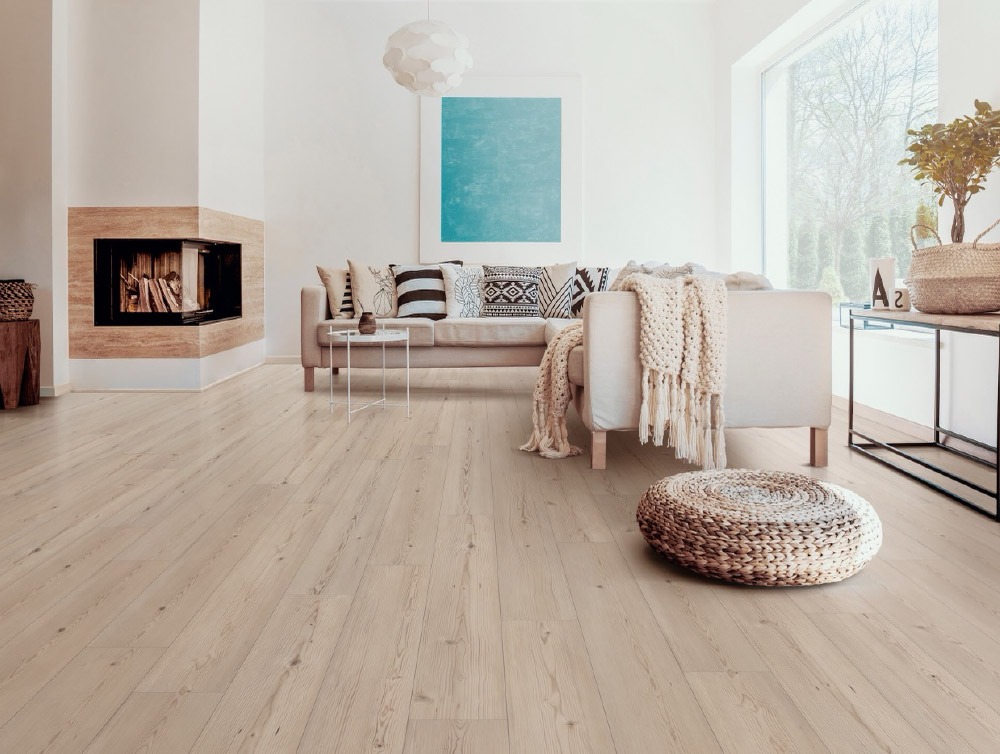
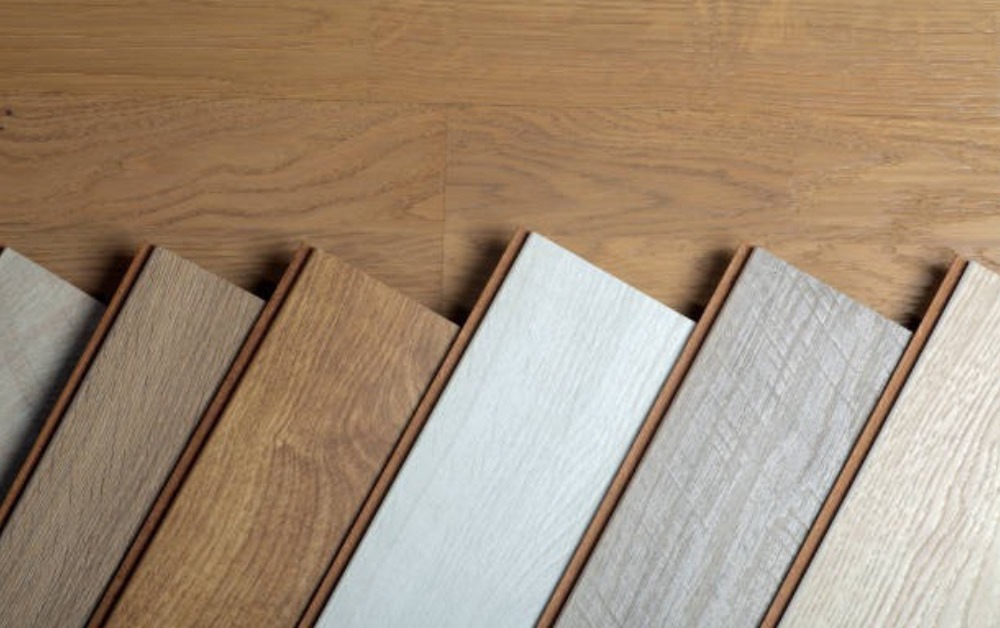
Luxury vinyl flooring is designed to look like wood or stone but comes at a much lower price. It’s made of several layers that make it both durable and water-resistant, which is why so many homeowners choose it for kitchens, bathrooms, and basements.
There are two main types: luxury vinyl plank (LVP) and luxury vinyl tile (LVT). Planks mimic hardwood, while tiles often look like stone or ceramic. Both are available in a wide range of styles, textures, and colors.
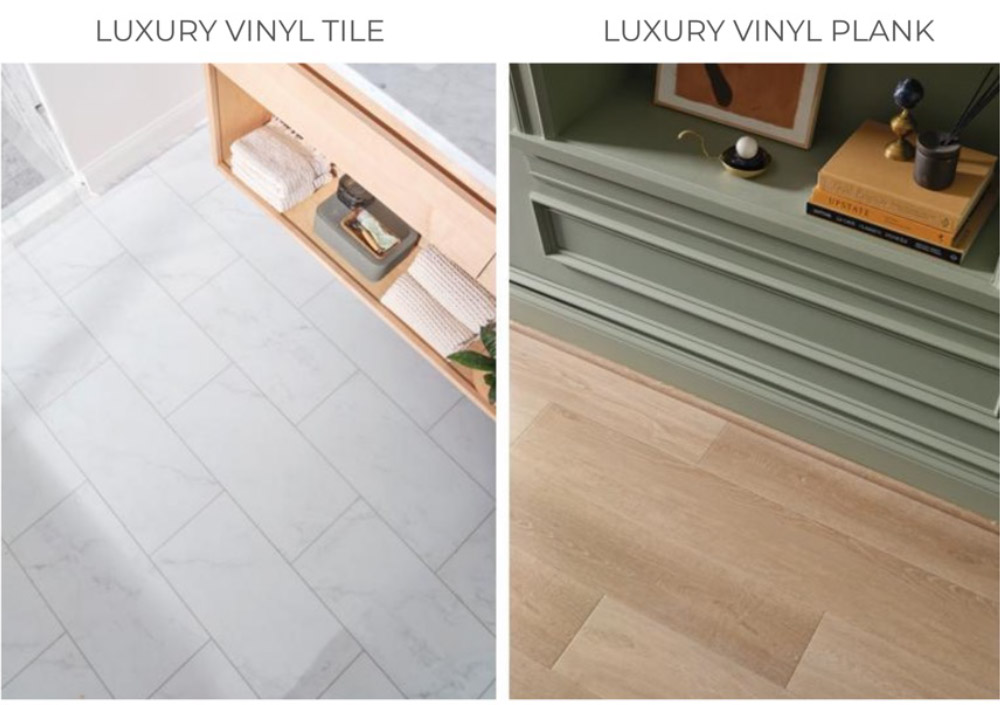
One of the biggest reasons for its popularity is how easy it is to clean and maintain. Many vinyl flooring types are scratch-resistant and can handle high-traffic areas without showing wear.
Another key advantage is how simple the installation process can be. Many homeowners choose floating floor systems that click into place without glue or nails. This makes it easier to install vinyl flooring yourself and skip some of the added labor costs.
If you're working with a professional, vinyl flooring installation is still quicker and more affordable compared to other flooring options like hardwood or stone. This helps keep your total flooring cost down while still getting a great look.
When budgeting for a vinyl floor, the first thing to look at is the material cost. Prices can vary depending on the quality, thickness, and brand you choose.
On average, luxury vinyl flooring costs between $2 and $7 per square foot. Here's what that range looks like in real terms:
Some luxury vinyl tile or vinyl plank floor products may fall slightly outside this range, especially from premium brands or collections.
Keep in mind that this is just the cost of the flooring material itself. The total flooring price goes up once you include floor installation and any prep work.
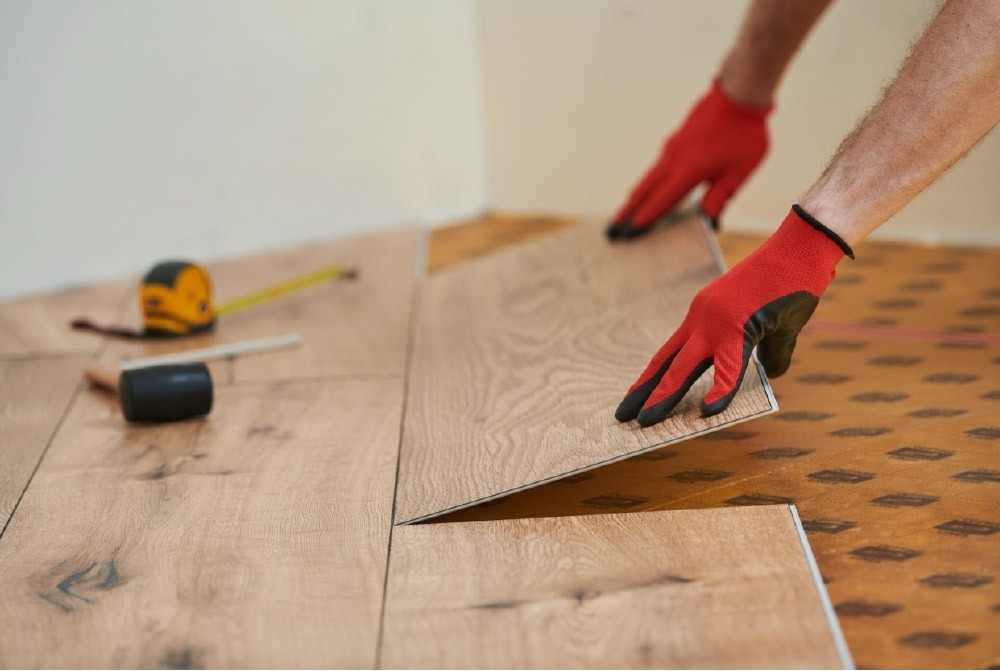
Installing luxury vinyl flooring can be a DIY-friendly job, especially if you go with a floating floor system. These planks lock together without glue or nails, which makes them easier to manage for first-timers.
But not every space is that simple.
If your subfloor is uneven or you’re working around lots of corners and fixtures, hiring a pro can save you time and headaches. It also ensures your vinyl floor lays flat, looks clean, and lasts longer.
Expect to pay about $2 to $5 per square foot for professional installation. That rate goes up if your installer needs to:
These services are usually not included in the base install price, so be sure to ask.
We’ve seen homeowners save hundreds by doing it themselves, especially in small, square rooms with floating floors. But we’ve also seen botched installs where seams didn’t line up or planks popped after a few weeks.
If you’re tackling it DIY, go slow and don’t skip subfloor prep. If you’re hiring it out, make sure the quote includes everything: removal, leveling, and haul-away. Some companies charge extra for the things they should’ve included from the start.
DIY can save you hundreds (or more), but it’s not for everyone. If you have the tools and follow the manufacturer’s steps closely, go for it. Just keep in mind that bad installs often lead to voided warranties or future repairs.
For larger jobs or rooms with odd layouts, hiring professional flooring installers usually pays off.
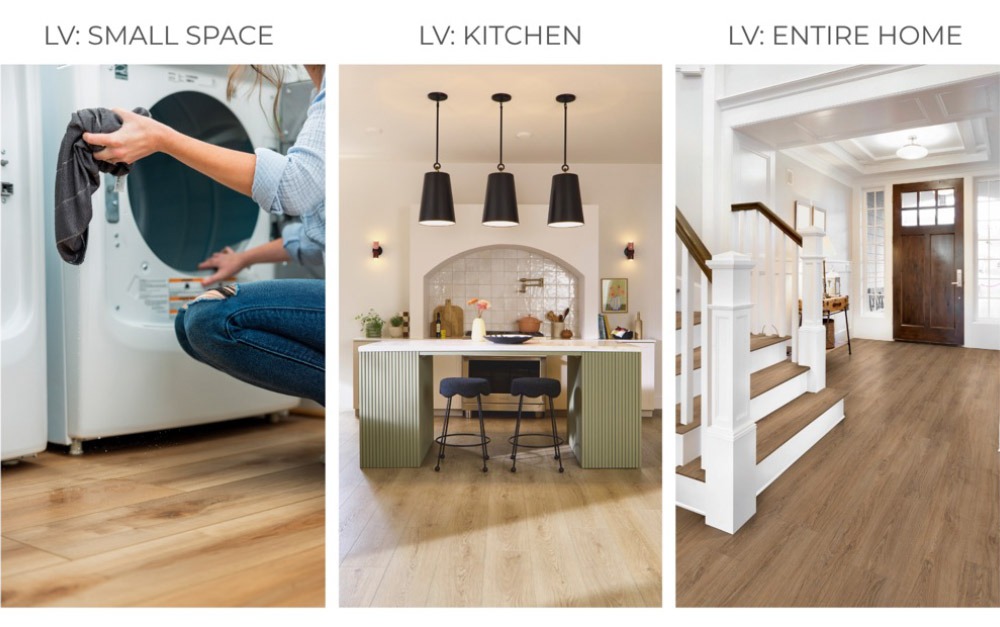
Before getting too deep into product options, it helps to figure out a rough estimate for your flooring budget.
Here’s a simple three-step way to calculate your expected flooring cost:
Multiply length by width.
Example: 12 ft x 15 ft = 180 sq. ft.
Estimate Example:
Mid-range flooring + pro install
So your total cost per square foot will likely fall between $6 and $10, depending on material grade and added services.
Use this estimate as a starting point when comparing quotes or evaluating product options.
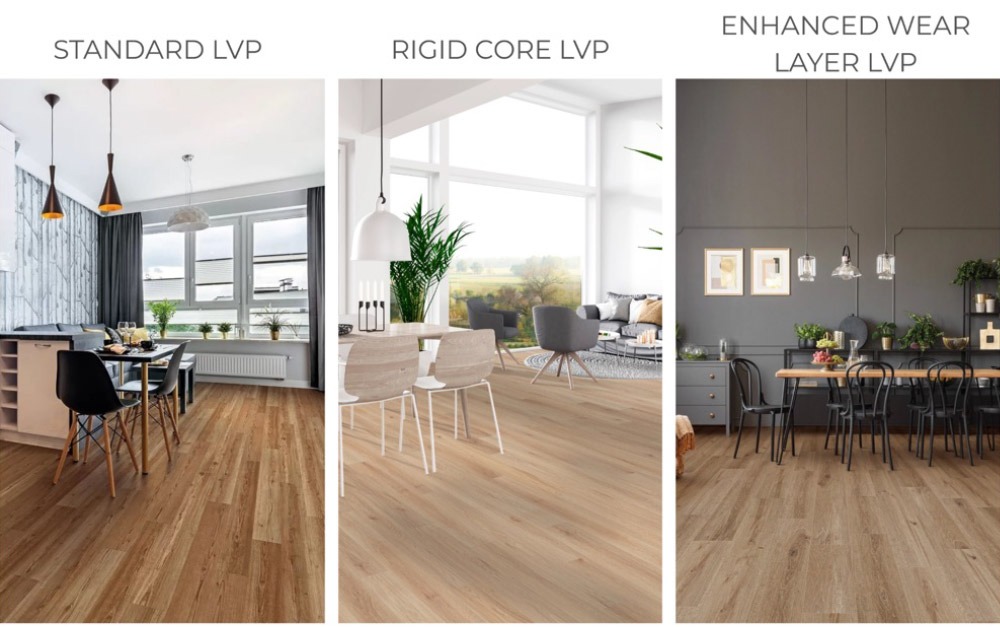
Once you factor in both the material and the labor, the total cost of your vinyl flooring installation starts to take shape.
Let’s break it down using average prices.
If you go with a mid-range luxury vinyl plank, you’ll likely spend about $6 to $10 per square foot installed. That includes both the planks and the cost to hire someone to put them in.
Here’s how that plays out by room size:
Prices will be lower if you go with a basic vinyl floor, and higher if you’re installing top-tier luxury vinyl plank flooring or running into extra prep work.
If you’re paying for tear-out, subfloor repairs, or underlayment, that will also raise the final number. Some contractors bundle these services into their flooring cost, while others charge separately.
To get an accurate estimate, measure your space, choose your flooring material, and multiply that by the full cost per square foot including installation.
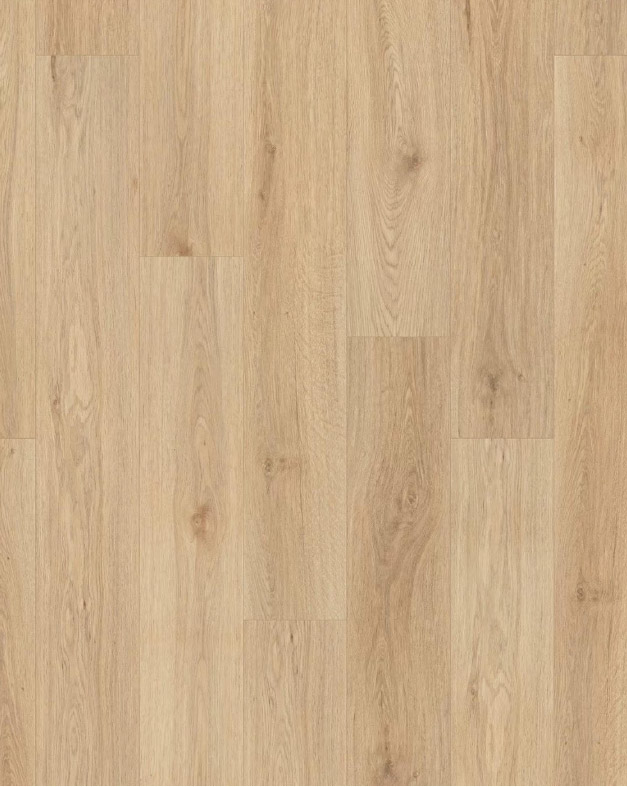
Not all vinyl plank flooring is priced the same. The type you choose has a big impact on both the cost of vinyl and how much you’ll spend on the overall flooring project.
Here’s a quick breakdown of the most common types of vinyl and what you can expect to pay:
Each flooring type not only changes how your space looks but also impacts the vinyl plank flooring cost when you add in installation and prep work.
Choosing the right option depends on your budget, lifestyle, and how long you want the floor to last.

Not all vinyl floors cost the same. A few key details can raise or lower the price of your flooring project, even if you're covering the same square footage.
Luxury vinyl plank and luxury vinyl tile are the most common, but other options like sheet vinyl or rigid core vinyl may cost more or less depending on the brand and features. Thicker products with waterproof cores usually come at a higher price point.
Some types of vinyl are easier to install than others. Floating floors are quicker to lay down, while glue-down options take more labor.
The flooring material itself affects the price. Higher-end vinyl comes with stronger wear layers, better texture, and more realistic patterns. These details help your floors last longer, especially in busy areas.
Click-lock planks are easier and faster to install, which can reduce installation cost. Glue-down or loose lay flooring may add time and labor charges. The more complex the installation method, the more you’ll pay in the end.

If your existing flooring is damaged or uneven, expect to pay extra to prep the surface. This includes the removal of old flooring, smoothing out subfloors, and sometimes adding underlayment.
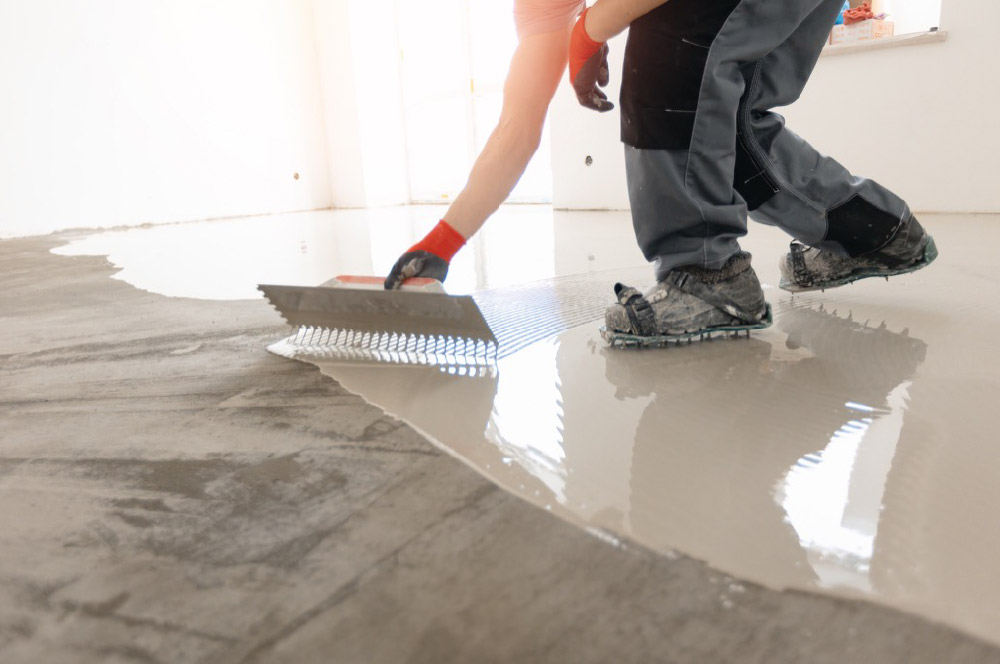
Room shape matters. A clean rectangle? Easy. Lots of hallways, closets, or corners? That’s more time, more cuts, and more cost

The price tag on your vinyl flooring installation isn’t just about materials and labor. There are often extra costs that show up once the project starts.
Here’s what else can affect your installation cost:
If you’re replacing carpet, tile, or hardwood, expect to pay $1 to $3 per square foot for removal. Someflooring installers include this in their quote. Others charge it as a separate line item.
An uneven or damaged subfloor needs to be fixed before you can install vinyl. This might cost $2 to $3 per square foot, depending on the condition of the floor underneath.
Some vinyl plank flooring products come with padding attached. If yours doesn’t, you may need to add underlayment for better comfort and noise control. That’s another $0.50 to $2 per square foot.
Most installers charge extra to move large items out of the way before they start. Clear the room yourself to avoid these charges if you can.
Installing a new floor sometimes means adjusting baseboards or trimming doors to fit. Small details, but they can add time and cost to the job.
Keeping these in mind while budgeting your flooring project helps avoid surprise expenses later on.

For most homeowners, yes.
Luxury vinyl flooring gives you the look of hardwood or tile without the high price. It stands up to water, scratches, and daily wear, especially in high-traffic spots like kitchens and entryways.
It’s cheaper to install than hardwood and easier to live with. No sealing, no sanding, just sweep and mop.
If you want a durable, low-maintenance floor that looks good and won’t blow your budget, luxury vinyl is a smart choice.
If you're still weighing the pros and cons, we covered this more in-depth in our post on whether a luxury vinyl plank is worth it. It breaks down cost vs. value and how it stacks up long-term.
Saving on your vinyl flooring installation doesn’t always mean going cheap. It’s about knowing where to spend and where you can trim back without hurting the results.
Choosing the right vinyl flooring type and installer can make a big difference in the outcome of your flooring project, and in how much you’ll spend later to fix it.
Expect $6,000 to $10,000 total, including materials and labor. High-end options or extra prep work can push it toward the upper end.
Plan for $4 to $8 per square foot installed. DIY installs can drop that closer to $2 to $5, depending on the product.
A solid range is $4 to $6 per square foot for quality materials with good durability and realistic wood looks.
Yes. LVP usually costs less to buy and install. It’s also easier to maintain, especially in homes with kids or pets.
Now that you have a clear idea of what goes into luxury vinyl flooring installation costs, you're in a better position to plan your next step.
Looking for affordable, high-quality luxury vinyl flooring options? At Carpet Exchange, we offer a wide range of LVP styles and provide expert help to guide your next flooring project.
Get a Quote → Browse our LVP selection or get a personalized quote from Carpet Exchange today.